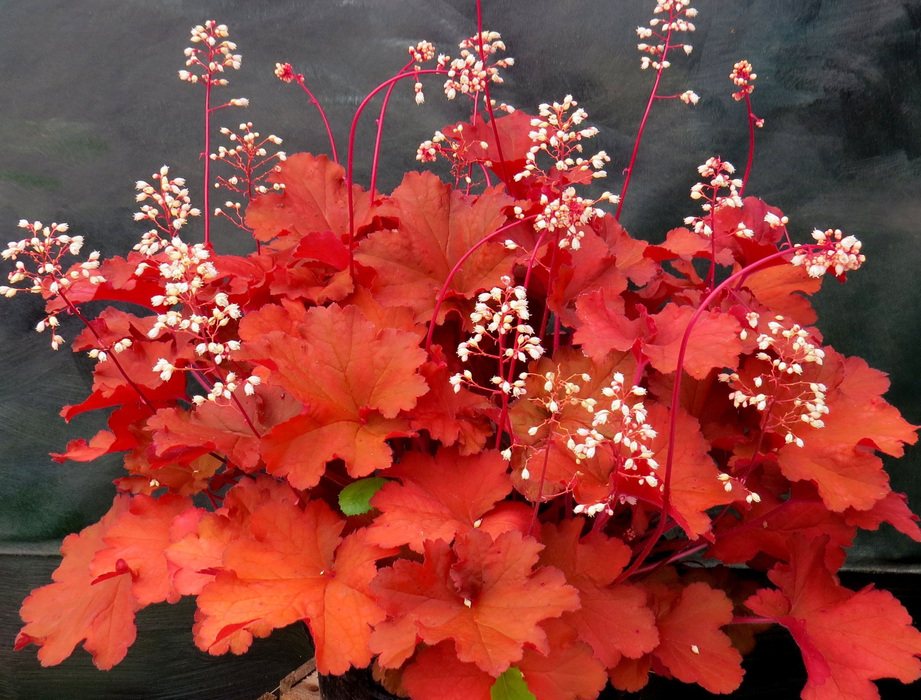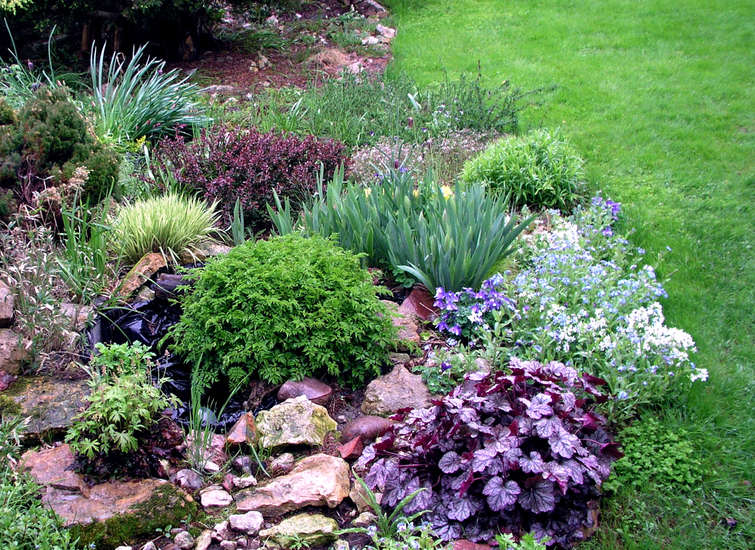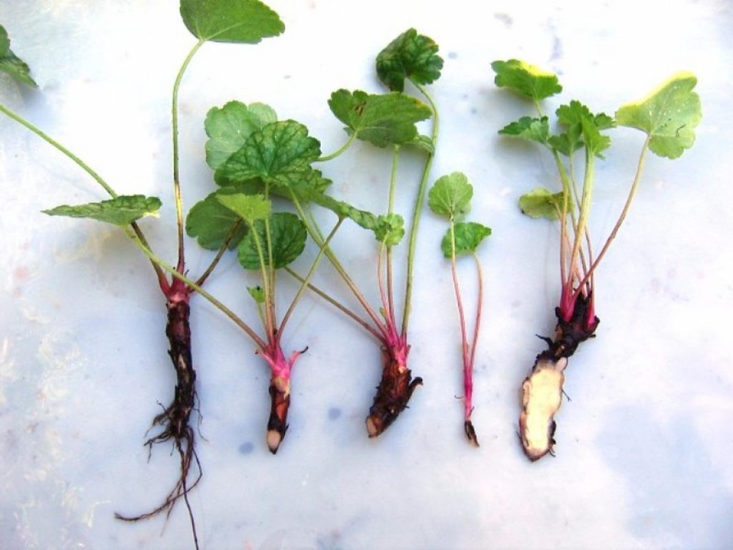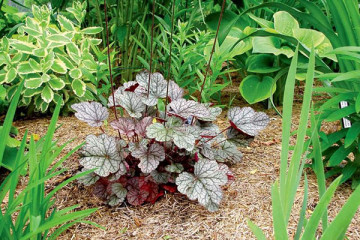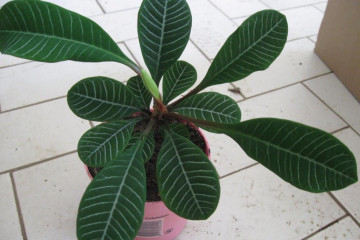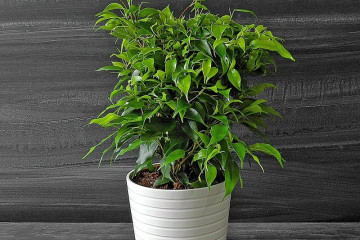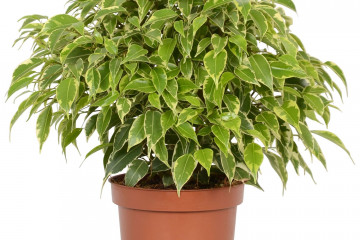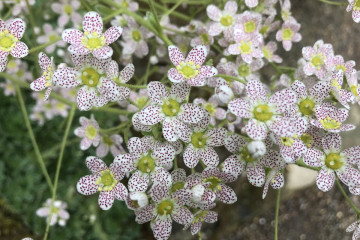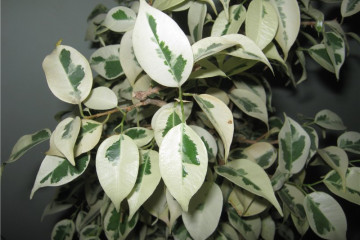Heuchera Rio: description
Content:
The beauty of Heuchera lasts quite a long time - from the first weeks of spring to late autumn. That is why the flower is often used for decorative purposes: to decorate garden plots, central paths, rockeries. Heuchera is also grown in city apartments and office buildings. Culture is often an essential element of floral arrangements in landscaping projects. Geichera boasts a wide variety of species and varieties.
First of all, they differ in the color of the leaves, which ranges from simple green to cream, gray, red, purple, silver in various combinations. Heuchera is a genus of perennial herbaceous plants belonging to the Saxifrage family. The homeland of the flower is North America.
Geichera Rio has the following description and characteristics:
- The height of the Heuchera heuchera rio can reach 20-25 cm.
- The diameter of the bush is about 35 cm.
- The leaves have a carved surface.
- In the process of growth, the color of the leaf plates changes - light green gradually turns into coral.
- White flowers are collected in spike-shaped inflorescences.
- Heuchera hybrida rio blooms in the first days of June and ends in late September. The first flowers appear in late spring.
- Geichera Rio prefers sunny areas and partial shade. On a hot day, it is better to place the plant in the shade to prevent burning of the leaves.
- Heuchera rio grows well on fertile, moist soils (it is necessary to exclude stagnant water in the soil).
Application in landscape design
Heuchera is actively used in this direction, which is explained by the richness of the color palette of this plant. The culture is included in both single-species compositions and mixed plantings. Due to its shape stability, the plant can be used to create geometrically strict flower beds. Geichera goes well with miniature shrubs. The flower is recommended to be combined with crops such as:
- Host.
- Badan.
- Primrose.
- Brunner.
- Astilba.
- Decorative cereals.
Heuchera is used not only as an additional element in landscape design, but is also chosen as an accent plant that attracts the main attention.
The use of Heuchera for decorative purposes is very versatile and includes the following options:
- In mixed borders - both floral and woody-shrub.
- For decorating ponds.
- As a border.
- Combined with roses, hosts, irises.
- In rockeries, rock gardens.
- In combination with early flowering bulbous plants. This possibility is provided by the fact that after wintering, the geychera retains the rosette of leaves.
- Like a cut plant. Varieties with bright inflorescences are suitable for these purposes.
- In the form of a container culture.
Flower garden propagation methods
Heuchera is propagated in three ways:
- By dividing the bush;
- Seeds;
- Cuttings.
To grow a young specimen by dividing a bush, you need to do the following:
- Dig out a heuchera and divide the bush into several parts.
- Cut off dried shoots, leaving live buds located in the leaf axils.
- Roots that are too long should be shortened. It is also necessary to remove decaying areas, treat the cuts with crushed coal.
- Prepare a landing hole measuring 30 by 30 cm, pour ash into it and add top dressing.
- Plant Heuchera.
- Water the plant.
- Protect from direct sunlight.
It is not difficult to grow Heuchera from seeds, however, the success of the event directly depends on the correct implementation of the planting rules, namely:
- After collecting seeds, the viability of the latter is six months. Therefore, when purchasing seeds, you should pay special attention to the shelf life of the product. Seeds packed in foil are stored longer - about one and a half years.
- For disembarkation, you will need a wide container with drainage holes. The container must be at least 5 cm high.
- For sowing, you need to take loose soil.
- A little sand or perlite should be added to the soil.
- Before planting, the soil is warmed up for several minutes. This can be done in the oven. Another option is to warm it up with boiling water and wait until the earth dries up.
- Sowing time may be in March or April, depending on the amount of light.
- Since the seeds are very small, it is recommended to mix them with sand. Thanks to this, the seedlings will be more uniform.
- For the same reason, the seeds are not deepened by planting them superficially on pre-moistened soil. You should also loosen and level the soil in advance.
- Next, the seeds are covered with foil or glass.
- Provide seeds with access to light. To do this, they can be placed on the windowsill. In this case, it is important to ensure that the seedlings are not exposed to cold and draft.
- Seedlings will appear in a couple of weeks. During this time, the seeds should be regularly ventilated. When they rise, the coating in the form of glass or film is left, only slightly raised (another option is to make special holes).
- When the first 3 leaves are formed, the seedlings need to be planted, keeping a distance of 4-6 cm between them.
- During this period, the process of soil moistening requires special attention. Both excess moisture and drying out of the soil entail the death of young plants.
- In May, when the weather is warm, the seedlings can be taken out into the garden, a shaded place. It is recommended to fix the container with shoots in the soil - thanks to this, young plants will get stronger faster.
- Seeds planted in spring produce shoots with a fully formed rosette by winter. Such plants can be left for the winter without shelter. At the same time, experienced florists still recommend covering the Heuchera with spruce branches.
Flower propagation by cuttings is carried out as follows:
- Lateral shoots with some part of the rosette are separated from the parent plant, while not affecting the root system.
- To reduce evaporation, some of the foliage must be removed. 2-3 leaves should remain on the stem.
- The cuttings are planted in a shaded bed with loose soil. Sand or vermiculite is added to the soil, as well as ash (it reduces the acidity of the soil).
- The ideal time to plant is May or June (that is, the period before flowering).
- After planting, the cuttings are covered with a cloth (which will absorb excess moisture), and then with a film.
- The sockets must be above ground level.
The first young leaves appear 3-4 weeks after planting. This means that heuchera has developed roots.
Landing in open ground
Most varieties of Heuchera prefer partial shade. Mostly in such areas, the sun appears only in the morning. On the other hand, experienced florists advise planting young flowers in well-lit places, while at the same time protected from strong wind and cold.
It is allowed to plant a culture in a flower garden in the open sun.An important condition is that it is better to place the Heuchera behind a tall flower, behind which the plant can “hide” from the midday sun.
In the places native to this culture, the soil has a neutral or slightly alkaline environment, therefore, it is better to use just such a soil for planting. The substrate should be light, fertile and loose.
The planting hole should have a good drainage layer 3-5 cm thick. It is recommended to add ash or dolomite flour to the soil.
Watering is carried out in moderation. The flower can withstand a short dry season. In hot weather, it is recommended to intensively moisten the soil under the plant (once a week is enough).
Plant feeding
Growing Heuchera does not require regular fertilization. Only sometimes the flower is fed with complex mineral compositions, the concentration of which should be 2 times less than for other horticultural crops. In the first year, the plant is not fertilized at all. In the future, it makes top dressing only during the period of active growth 2 times per season (before the beginning of flowering and after its end).
How to transplant Heuchera in the fall
In one place, the flower can grow for 5 years, then it is necessary to transplant. The procedure allows you to preserve the decorative properties of the culture. This will require:
- Dig up a bush.
- Remove long roots.
- Remove damaged and dried out areas of the flower.
- Divide the bush into 2-4 parts.
- Plant the shoots into the ground 20 cm deeper than they grew earlier. The distance between them should be between 20 and 25 cm.
- Cover the seedlings with mulch and water.
Geichera is the perfect balance of beauty and unpretentious care. A spectacular culture can easily transform the surrounding space, be it a garden, a flower bed or a mixborder.
